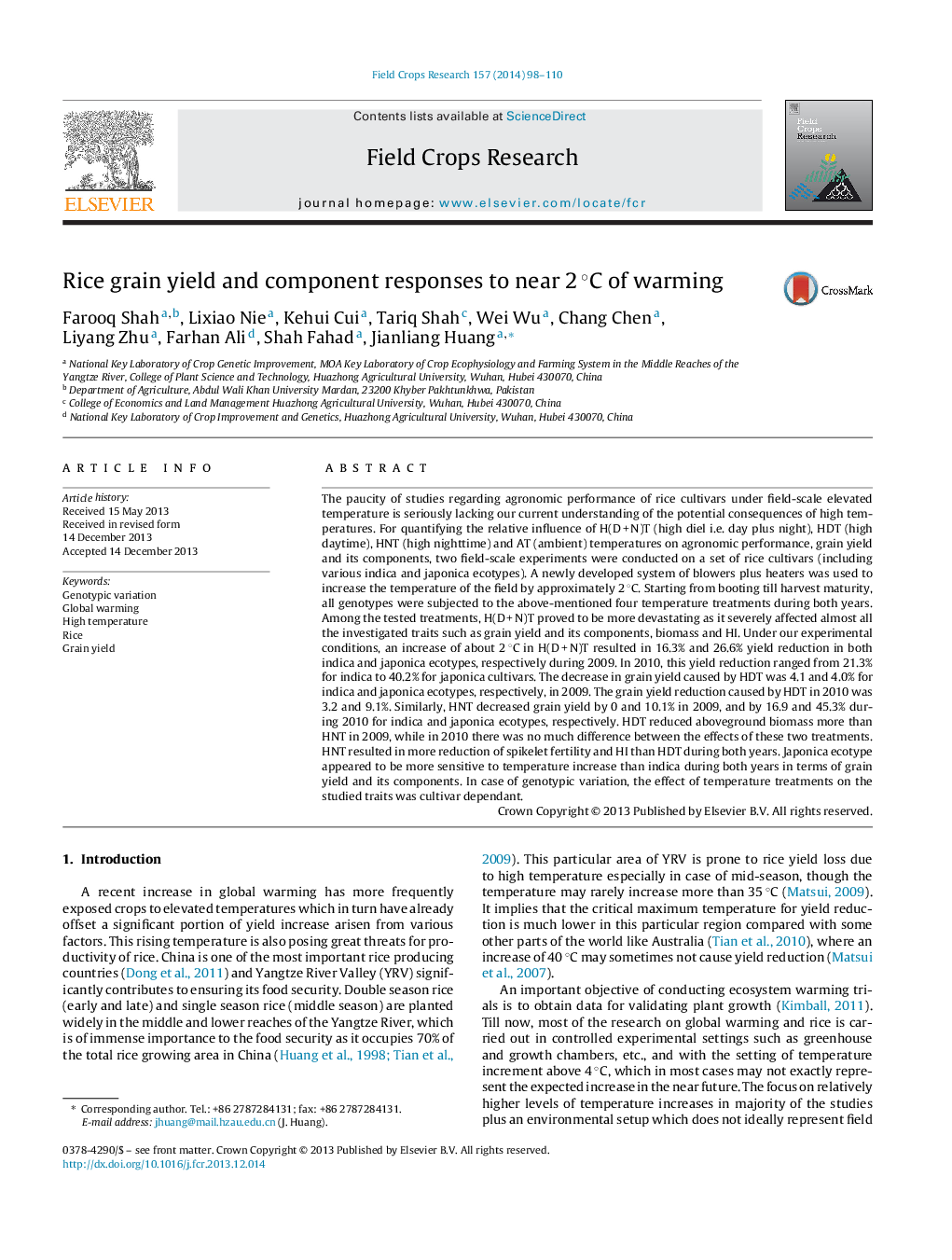| کد مقاله | کد نشریه | سال انتشار | مقاله انگلیسی | نسخه تمام متن |
|---|---|---|---|---|
| 4510156 | 1624706 | 2014 | 13 صفحه PDF | دانلود رایگان |

• The impact of elevated daytime, nighttime and diel temperature on rice yield and its components was studied under field conditions.
• Grain yields of different rice genotypes of indica and japonica ecotypes were compared under these temperature treatments.
• The elevated diel temperature proved to have more deleterious effect on yield than only daytime or nighttime.
• The reduction in yield could be mainly attributed to the reduced spikelet fertility under elevated temperature.
• Significant ecotypic and genotypic variation existed in response to elevated temperature.
The paucity of studies regarding agronomic performance of rice cultivars under field-scale elevated temperature is seriously lacking our current understanding of the potential consequences of high temperatures. For quantifying the relative influence of H(D + N)T (high diel i.e. day plus night), HDT (high daytime), HNT (high nighttime) and AT (ambient) temperatures on agronomic performance, grain yield and its components, two field-scale experiments were conducted on a set of rice cultivars (including various indica and japonica ecotypes). A newly developed system of blowers plus heaters was used to increase the temperature of the field by approximately 2 °C. Starting from booting till harvest maturity, all genotypes were subjected to the above-mentioned four temperature treatments during both years. Among the tested treatments, H(D + N)T proved to be more devastating as it severely affected almost all the investigated traits such as grain yield and its components, biomass and HI. Under our experimental conditions, an increase of about 2 °C in H(D + N)T resulted in 16.3% and 26.6% yield reduction in both indica and japonica ecotypes, respectively during 2009. In 2010, this yield reduction ranged from 21.3% for indica to 40.2% for japonica cultivars. The decrease in grain yield caused by HDT was 4.1 and 4.0% for indica and japonica ecotypes, respectively, in 2009. The grain yield reduction caused by HDT in 2010 was 3.2 and 9.1%. Similarly, HNT decreased grain yield by 0 and 10.1% in 2009, and by 16.9 and 45.3% during 2010 for indica and japonica ecotypes, respectively. HDT reduced aboveground biomass more than HNT in 2009, while in 2010 there was no much difference between the effects of these two treatments. HNT resulted in more reduction of spikelet fertility and HI than HDT during both years. Japonica ecotype appeared to be more sensitive to temperature increase than indica during both years in terms of grain yield and its components. In case of genotypic variation, the effect of temperature treatments on the studied traits was cultivar dependant.
Journal: Field Crops Research - Volume 157, 15 February 2014, Pages 98–110